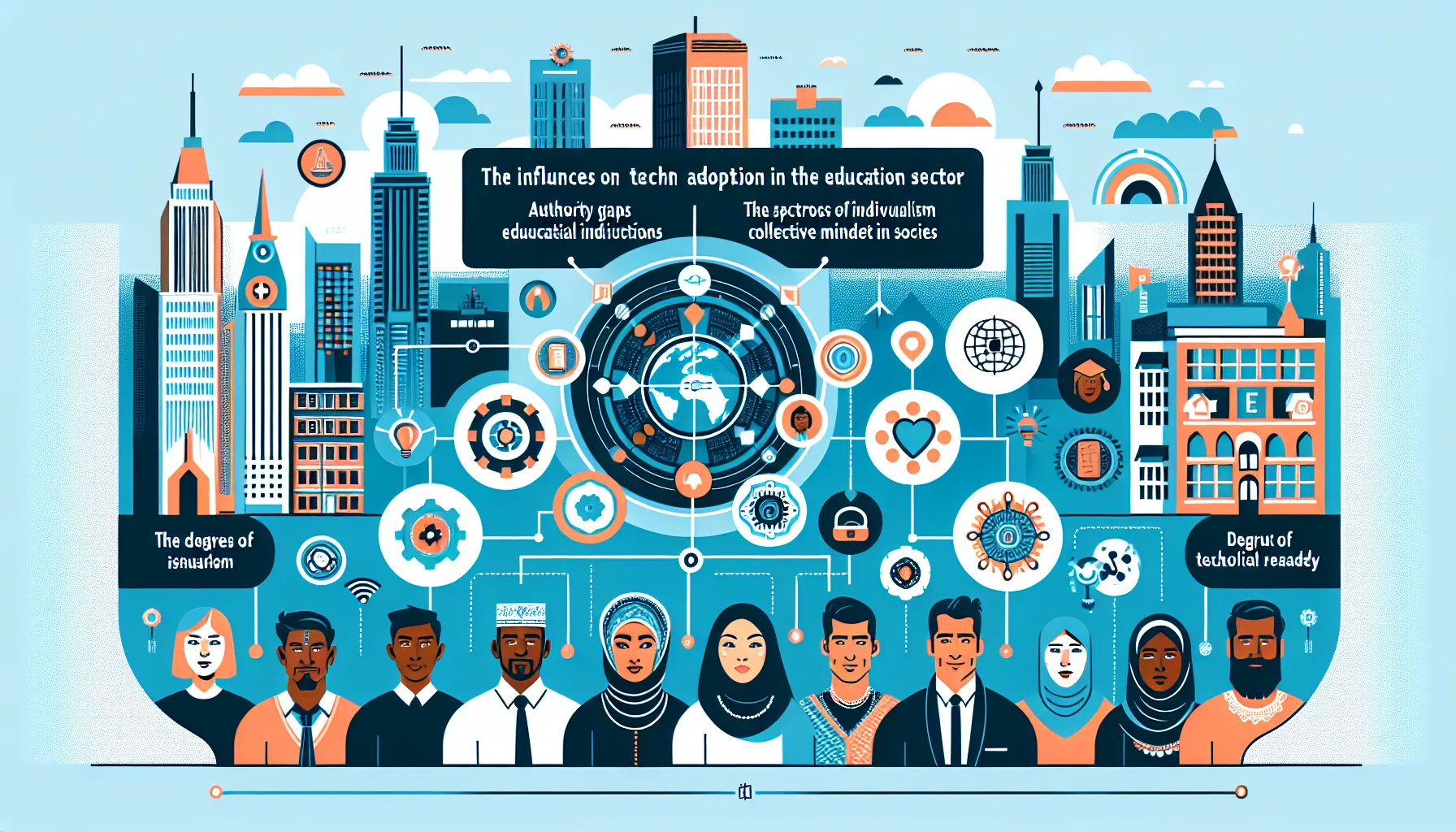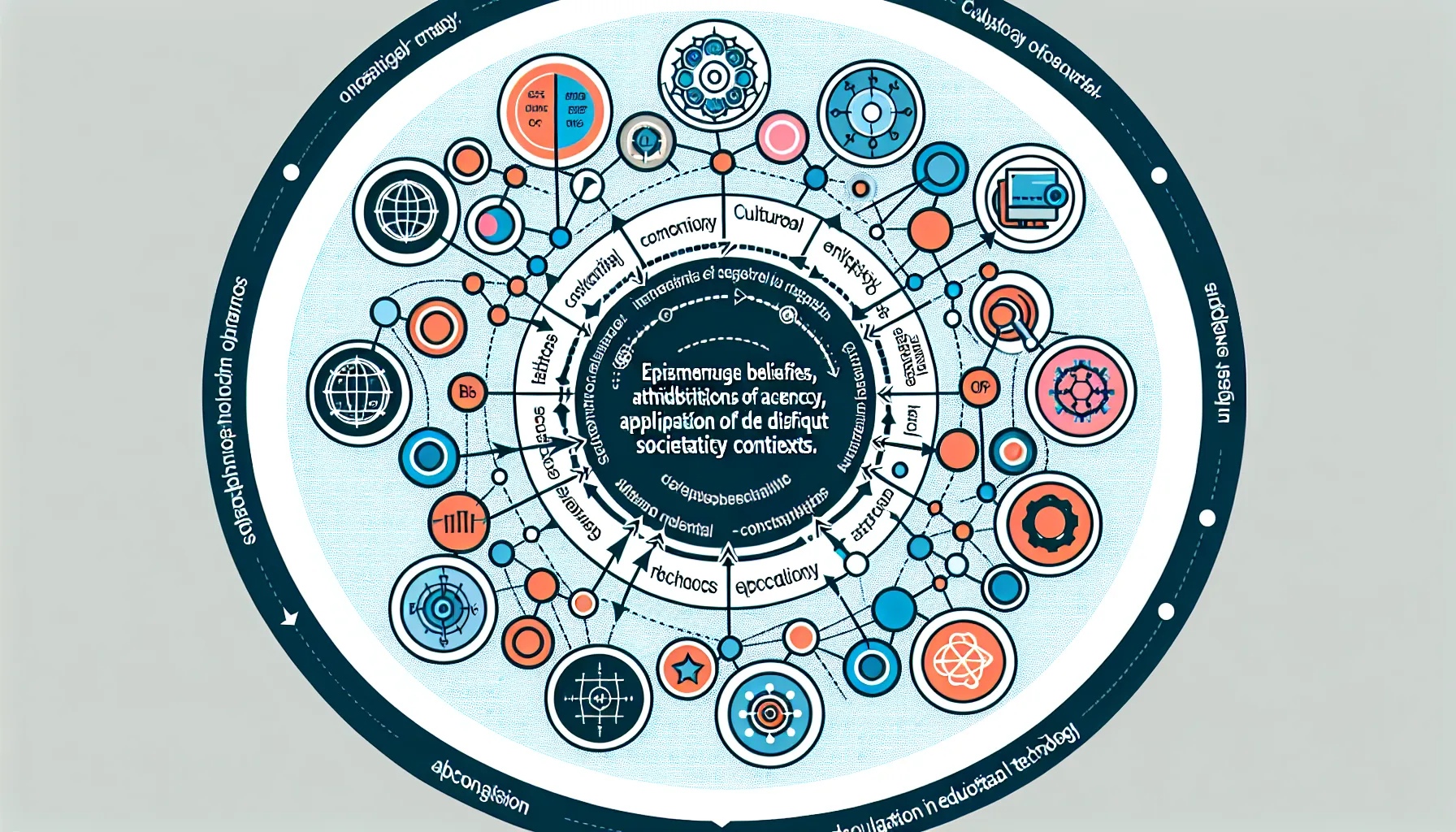Introduction: Understanding Cultural Impacts on Technology in Education
In today’s globalized world, the intersection of culture and technology in education has become increasingly significant. This IELTS Reading practice test explores the nuanced ways in which cultural backgrounds influence how students engage with educational technology. As we delve into this topic, we’ll examine various aspects of cultural differences in approaches to online learning and the use of technology in classrooms.
IELTS Reading Practice Test
Passage 1 (Easy Text)
Cultural Diversity in Digital Learning Environments
The digital revolution has transformed education worldwide, but its impact is not uniform across cultures. Research shows that students from different cultural backgrounds interact with educational technology in distinct ways, influenced by their cultural values, norms, and practices. For instance, students from collectivist cultures may prefer collaborative online learning platforms, while those from individualistic societies might gravitate towards self-paced digital tools.
One significant factor is the cultural attitude towards technology itself. Some cultures embrace technological advancements enthusiastically, integrating them seamlessly into education. Others may approach new technologies with caution, preferring traditional teaching methods. This cultural disposition can significantly affect students’ comfort levels and proficiency with educational technology.
Moreover, the design of educational software often reflects the cultural biases of its developers. Western-developed platforms may emphasize individual achievement and direct communication, which might not resonate with students from cultures that value group harmony and indirect communication styles. This cultural mismatch can lead to reduced engagement and effectiveness of the learning tools.
 Cultural influences on student engagement with technology
Cultural influences on student engagement with technology
Language also plays a crucial role in technology engagement. Students who are not native speakers of the language used in educational software may face additional challenges, potentially impacting their overall engagement and learning outcomes. This linguistic barrier underscores the importance of multilingual support in educational technology to ensure equitable access and engagement across diverse student populations.
Understanding these cultural nuances is essential for educators and technology developers alike. By recognizing and accommodating cultural differences, educational institutions can create more inclusive digital learning environments that cater to the diverse needs of their student body, ultimately enhancing engagement and learning outcomes for all.
Questions 1-5
Do the following statements agree with the information given in the reading passage?
Write
TRUE if the statement agrees with the information
FALSE if the statement contradicts the information
NOT GIVEN if there is no information on this
- Students from collectivist cultures prefer individual learning methods in online environments.
- All cultures approach new technologies with equal enthusiasm in educational settings.
- The design of educational software can reflect cultural biases.
- Language barriers can affect student engagement with educational technology.
- Educational institutions are unaware of the impact of cultural differences on technology engagement.
Questions 6-10
Complete the sentences below.
Choose NO MORE THAN TWO WORDS from the passage for each answer.
- Students from ___ societies might prefer self-paced digital learning tools.
- The ___ of educational software often reflects the cultural biases of its developers.
- Western-developed platforms may emphasize ___ achievement and direct communication.
- ___ support in educational technology is important for ensuring equitable access.
- Understanding cultural nuances is essential for creating more ___ digital learning environments.
Passage 2 (Medium Text)
The Role of Cultural Background in Technological Adaptation
The interplay between culture and technology in educational settings is a complex phenomenon that has garnered increasing attention from researchers and educators alike. As digital tools become ubiquitous in classrooms around the world, it has become evident that a student’s cultural background significantly influences their engagement with and adaptation to these technologies.
One of the most salient aspects of this cultural influence is the varying degrees of technological readiness across different societies. In some cultures, technology is deeply integrated into daily life from an early age, resulting in students who are inherently comfortable with digital learning tools. Conversely, in cultures where technology adoption has been slower or more recent, students may exhibit a steeper learning curve when it comes to engaging with educational technology.
The concept of power distance, a cultural dimension identified by anthropologist Geert Hofstede, plays a crucial role in how students interact with technology in educational settings. In high power distance cultures, where hierarchical relationships are more pronounced, students may be less inclined to experiment with technology or question its use, potentially limiting their engagement. In contrast, low power distance cultures often foster environments where students feel more empowered to explore and customize their technological learning experiences.
 Cultural differences in technology adaptation in education
Cultural differences in technology adaptation in education
Another critical factor is the cultural attitude towards collaboration versus individual achievement. Cultures that prioritize collective success may find greater value in technologies that facilitate group work and shared learning experiences. On the other hand, cultures that emphasize individual accomplishment might see higher engagement with technologies that allow for personalized learning paths and individual progress tracking.
The perception of time across cultures also impacts technology engagement in education. Monochronic cultures, which view time as a linear and segmented resource, may prefer structured, time-bound digital learning activities. In contrast, polychronic cultures, where time is seen as more fluid and multitasking is common, might engage more readily with flexible, non-linear digital learning environments.
Furthermore, the cultural context of communication styles significantly affects how students interact with educational technology. High-context cultures, which rely heavily on non-verbal cues and implicit communication, may find certain aspects of digital communication challenging or lacking. Low-context cultures, with their preference for explicit, direct communication, might adapt more easily to text-based digital learning platforms.
Understanding these cultural nuances is crucial for developing and implementing effective educational technology strategies. Educators and technology developers must consider these cultural dimensions to create inclusive digital learning environments that cater to diverse student populations, ultimately enhancing engagement and learning outcomes across cultural boundaries.
Questions 11-14
Choose the correct letter, A, B, C, or D.
-
According to the passage, which of the following is true about technological readiness across cultures?
A) It is uniform across all societies
B) It varies significantly between different cultures
C) It only affects students in developing countries
D) It is not important for educational technology engagement -
The concept of power distance in cultures affects:
A) The speed of internet connections in schools
B) The cost of educational technology
C) How students interact with technology in educational settings
D) The availability of technology in different countries -
Cultures that prioritize collective success are more likely to value:
A) Technologies that facilitate individual learning
B) Technologies that enable group work
C) Traditional, non-digital learning methods
D) Competitive learning environments -
The perception of time in different cultures impacts:
A) The duration of school days
B) The number of subjects taught
C) The way students engage with digital learning activities
D) The cost of educational technology
Questions 15-19
Complete the summary below.
Choose NO MORE THAN TWO WORDS from the passage for each answer.
Cultural background plays a significant role in how students adapt to educational technology. Factors such as (15) readiness and power distance influence engagement levels. The cultural emphasis on (16) versus individual achievement affects preferences for certain types of learning technologies. Additionally, the (17) of time in different cultures impacts the structure of digital learning activities. The (18) of communication styles also affects how students interact with educational technology. Understanding these cultural nuances is crucial for creating (19) ___ digital learning environments that cater to diverse student populations.
Passage 3 (Hard Text)
Navigating the Cultural Complexities of Educational Technology Integration
The integration of technology in education is a multifaceted process that extends beyond mere infrastructure and device availability. It encompasses a complex interplay of cultural, social, and pedagogical factors that significantly influence the efficacy and acceptance of educational technology across diverse global contexts. As educational institutions worldwide strive to leverage digital tools to enhance learning outcomes, they increasingly encounter the nuanced challenges posed by cultural diversity in their student populations.
One of the most profound cultural dimensions affecting technology integration in education is the concept of epistemological beliefs – how knowledge is constructed and validated within different cultural frameworks. Western educational paradigms, which often emphasize critical thinking, individual inquiry, and empirical evidence, have heavily influenced the design of many educational technologies. However, these approaches may not align with the epistemological beliefs of cultures that prioritize collective wisdom, intuitive understanding, or traditional knowledge systems. This misalignment can lead to cognitive dissonance among students, potentially undermining their engagement with and trust in educational technology.
The cultural attribution of agency in the learning process also plays a crucial role in technology acceptance. In cultures where teachers are viewed as the primary source of knowledge and authority, students may be less inclined to engage autonomously with educational technology, preferring direct instruction. Conversely, in cultures that emphasize learner autonomy, students might more readily embrace self-directed digital learning tools. This cultural variance in perceived agency necessitates a nuanced approach to technology integration that respects and accommodates diverse learning styles and expectations.
 Cultural complexity in educational technology integration
Cultural complexity in educational technology integration
Another critical factor is the technological frame of reference prevalent in different cultures. This frame encompasses the collective attitudes, expectations, and prior experiences with technology that shape how new educational technologies are perceived and utilized. Cultures with a strong technological frame of reference, often characterized by widespread access to and familiarity with digital tools, may exhibit greater readiness to adopt advanced educational technologies. In contrast, cultures with limited technological exposure may require more comprehensive support and scaffolding to effectively integrate digital learning tools into their educational practices.
The concept of face and its preservation, particularly salient in many Asian cultures, introduces additional complexities in technology-mediated learning environments. In cultures where maintaining face is paramount, students may be reluctant to engage in public online discussions or seek help through digital platforms, fearing potential embarrassment. This cultural dynamic necessitates the development of educational technologies that incorporate face-saving mechanisms, such as anonymous participation options or private feedback channels, to ensure equitable engagement across diverse cultural contexts.
Furthermore, the cultural dimensions of time orientation and uncertainty avoidance significantly impact the design and implementation of educational technology initiatives. Cultures with a long-term orientation may be more receptive to investing in comprehensive, future-focused digital learning infrastructures, while those with a short-term focus might prioritize immediate, tangible outcomes from technology integration. Similarly, cultures with high uncertainty avoidance may require more structured, predictable digital learning environments, whereas low uncertainty avoidance cultures might be more comfortable with flexible, exploratory technological approaches to education.
As educational institutions navigate these cultural complexities, it becomes imperative to adopt a culturally responsive approach to technology integration. This approach involves not only adapting existing technologies to suit diverse cultural contexts but also developing new educational technologies that are inherently inclusive and culturally sensitive. By recognizing and addressing the multifaceted cultural dimensions that influence technology engagement in education, institutions can create more equitable, effective, and inclusive digital learning environments that truly serve the needs of an increasingly diverse global student population.
Questions 20-23
Choose the correct letter, A, B, C, or D.
-
According to the passage, epistemological beliefs:
A) Are uniform across all cultures
B) Only affect Western educational systems
C) Influence how knowledge is constructed and validated in different cultures
D) Are irrelevant to educational technology design -
The concept of “face” in Asian cultures:
A) Encourages students to participate more in online discussions
B) Has no impact on technology-mediated learning environments
C) May lead to reluctance in engaging with certain aspects of digital learning
D) Is only relevant in traditional classroom settings -
Cultures with a long-term orientation are more likely to:
A) Avoid investing in digital learning infrastructure
B) Focus only on immediate outcomes of technology integration
C) Be receptive to comprehensive, future-focused digital learning initiatives
D) Reject all forms of educational technology -
A culturally responsive approach to technology integration involves:
A) Imposing a single technological solution across all cultures
B) Ignoring cultural differences in educational settings
C) Adapting technologies to suit diverse cultural contexts
D) Eliminating technology from education entirely
Questions 24-26
Complete the sentences below.
Choose NO MORE THAN TWO WORDS from the passage for each answer.
- The ___ of agency in the learning process affects how students engage with educational technology.
- A culture’s ___ frame of reference influences how new educational technologies are perceived and utilized.
- Cultures with high ___ avoidance may require more structured digital learning environments.
Questions 27-30
Do the following statements agree with the claims of the writer in the reading passage?
Write
YES if the statement agrees with the claims of the writer
NO if the statement contradicts the claims of the writer
NOT GIVEN if it is impossible to say what the writer thinks about this
- Western educational paradigms have had no influence on the design of educational technologies.
- The concept of face preservation is only relevant in Asian cultures.
- Time orientation affects the design and implementation of educational technology initiatives.
- A culturally responsive approach to technology integration is unnecessary in modern educational settings.
Answer Key
Passage 1
- FALSE
- FALSE
- TRUE
- TRUE
- NOT GIVEN
- individualistic
- design
- individual
- Multilingual
- inclusive
Passage 2
- B
- C
- B
- C
- technological
- collaboration
- perception
- cultural context
- inclusive
Passage 3
- C
- C
- C
- C
- cultural attribution
- technological
- uncertainty
- NO
- NOT GIVEN
- YES
- NO
This comprehensive IELTS Reading practice test explores the multifaceted topic of cultural influences on student engagement with technology in educational settings. By examining various aspects such as epistemological beliefs, power distance, and cultural attitudes towards collaboration and time, the test provides valuable insights into the complexities of integrating technology in diverse cultural contexts.
For further exploration of related topics, you may find these articles helpful:
- Cultural Differences in Approaches to Online Learning
- The Role of Schools in Fostering Cultural Inclusion
- Importance of Cultural Preservation in Globalized Societies
Remember, understanding these cultural nuances is crucial for developing effective strategies in educational technology and creating inclusive learning environments that cater to diverse student populations.


